It's almost summer time! Wondering what's in season? Well, here's the May produce guide: a list of vegetables and fruits in season, which ones you should try to buy organic, and what to cook with them. It's split into two sections - the stuff that's in season this month, and the stuff that's in season somewhat throughout the year!
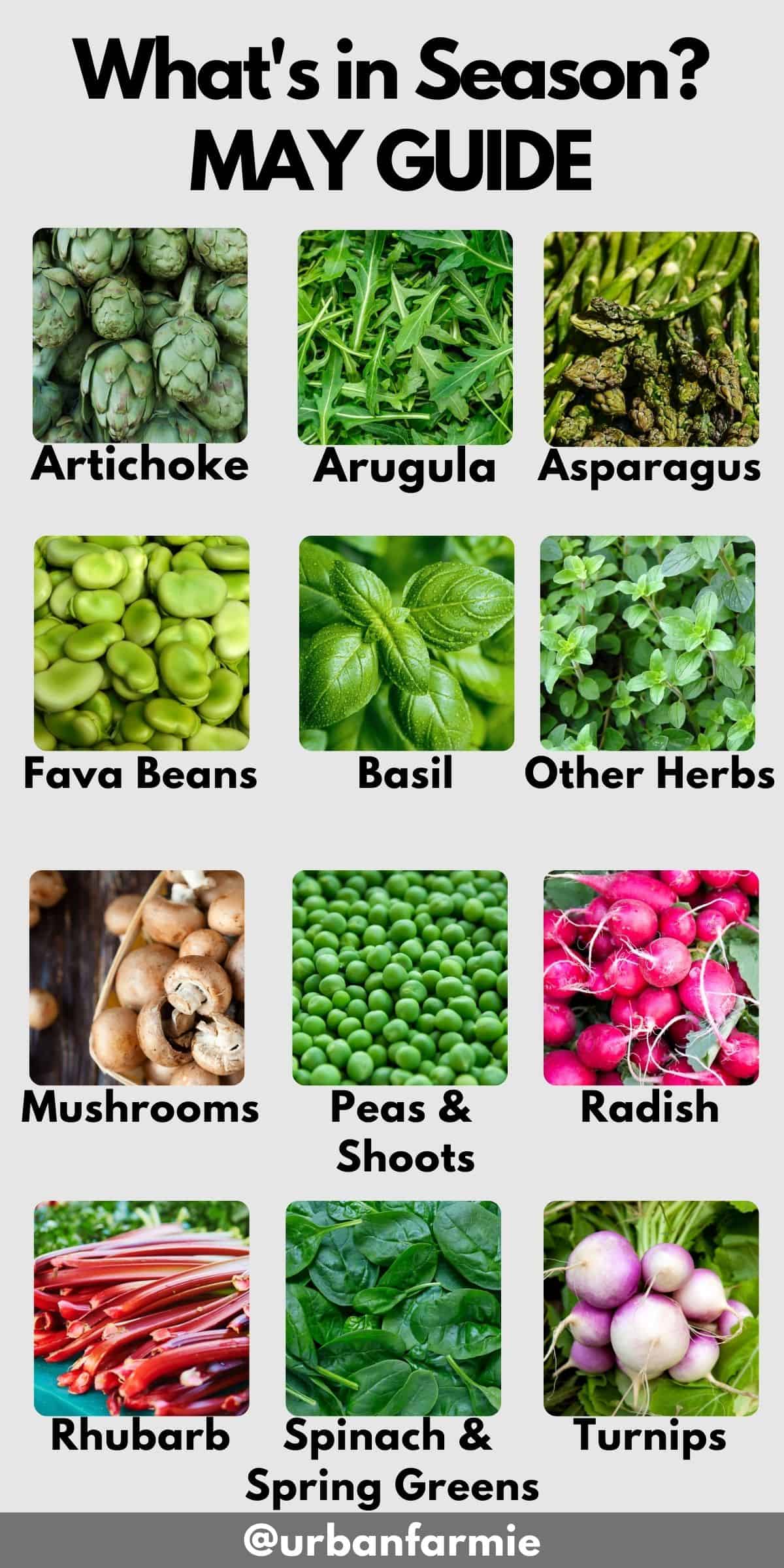
Artichokes
Artichokes are in season through June, and now through June is when it's really in season! You can definitely make use of artichoke sales now to cook up a storm. If you're wondering: canned artichokes are less nutritious compared to fresh ones, but still great!
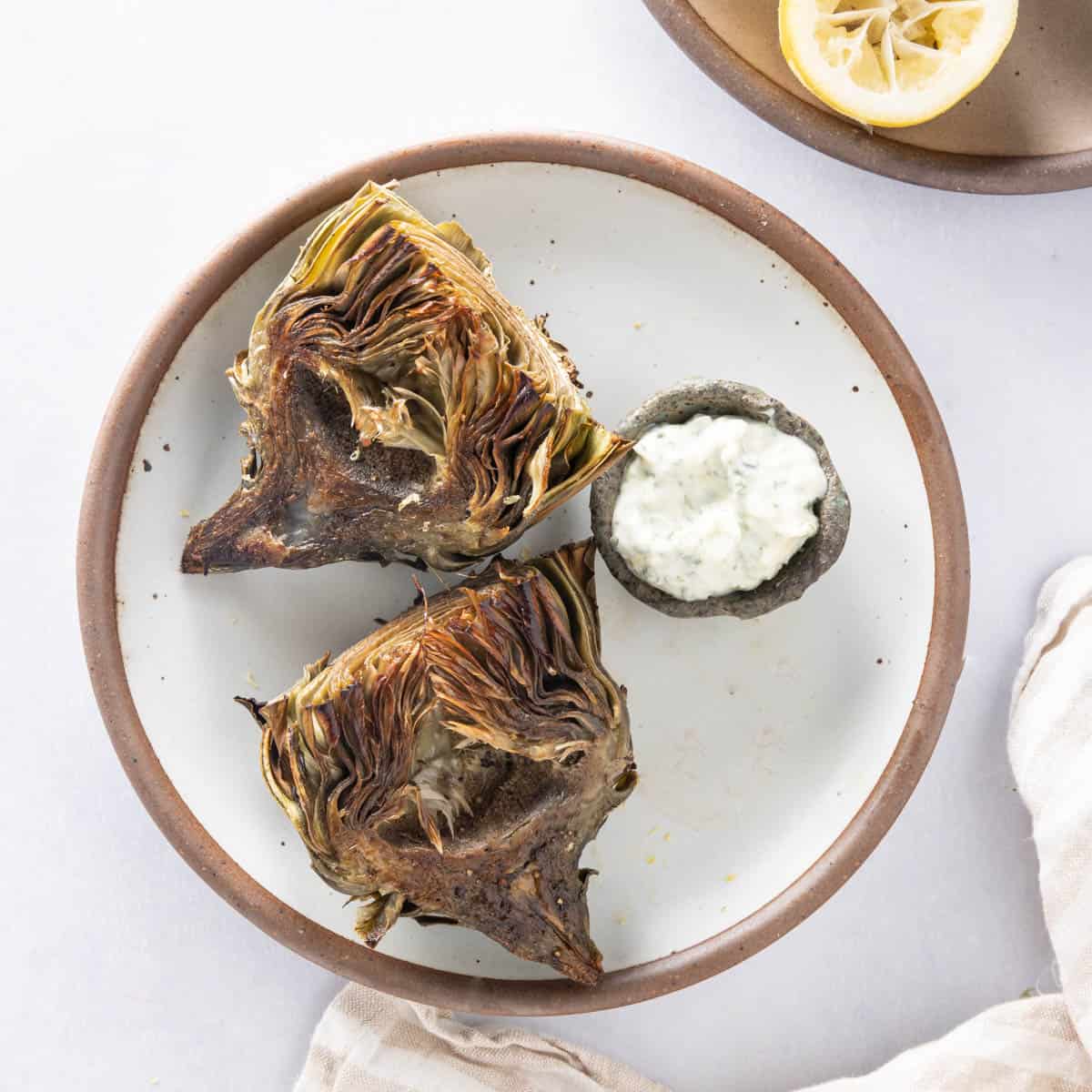
Organic Meter: 🚫 / 🟢
Artichokes are prone to pests, so conventionally, they were sprayed with a ton of pesticides. But two catches - studies have found limited pesticide residue, and one of the leading US producers, Ocean Mist, has started transitioning to pesticide-free production. So, you can go either way on this one. I prefer to buy organic, whenever possible.
- Air fryer artichokes. One of my favorite ways to eat artichokes and an ode to the Roman-Jewish fried artichokes. Just remember that you're going to end up discarding two-thirds of the vegetable (sadly!)
- Baby artichoke pasta: Delicious baby artichokes cooked with pasta, lemon and garlic - sounds delicious!
- Fresh artichoke dip. Fresh artichoke elevates the flavors of any dip. Give this a try when it's in season - you won't regret it!
Arugula
Arugula or rocket is such an underappreciated green! Well, or so I've realized now that I'm actually planting my spring garden and finding that it's one of the few plants that likes the shadier parts of my yard. It's got a peppery taste, and makes for a great, soft but crunchy salad green.
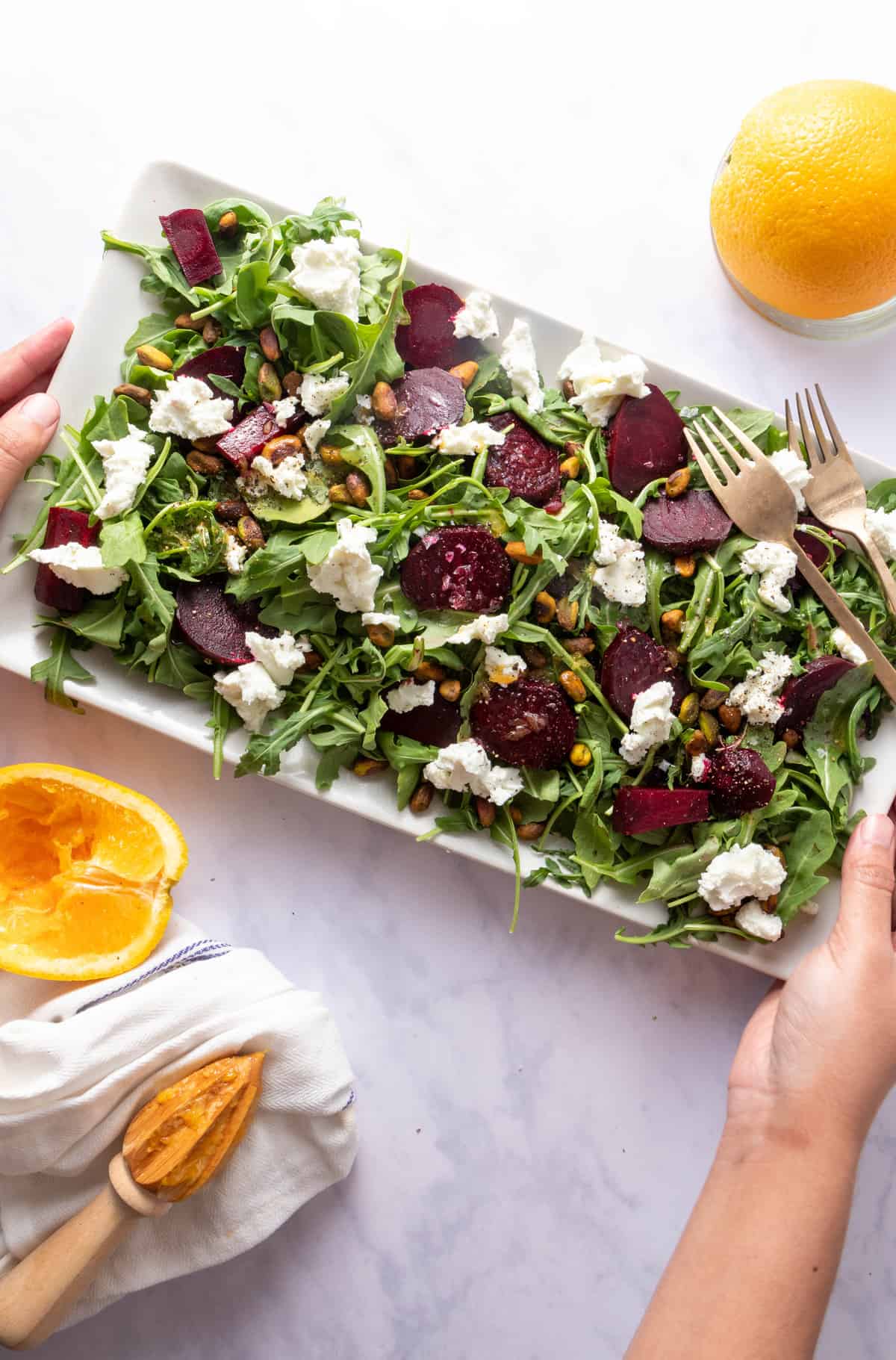
Organic Meter: 🟢
Like other leafy vegetables, arugula tends to retain dirt and chemicals. Therefore, I recommend going organic with this!
- Arugula salad with roasted beets and goat cheese. You've probably seen this salad a number of times, but it's so versatile and delicious!
- Whole wheat pizza with fresh arugula. Arugula on pizza is a wicked combination. I typically throw some burrata on there for good measure, but this whole wheat option from Cookie and Kate is great!
- One Pot Lemon Ricotta Pasta. Arugula and lemon are a match made in heaven thanks the combination of peppery and citrusy flavors.
Asparagus
Asparagus is still in season, so it's time to definitely make some delicious asparagus dishes. As a fun aside, did you know that asparagus plants take about three years before you can actually harvest the stalks? Talk about being a labor of love!
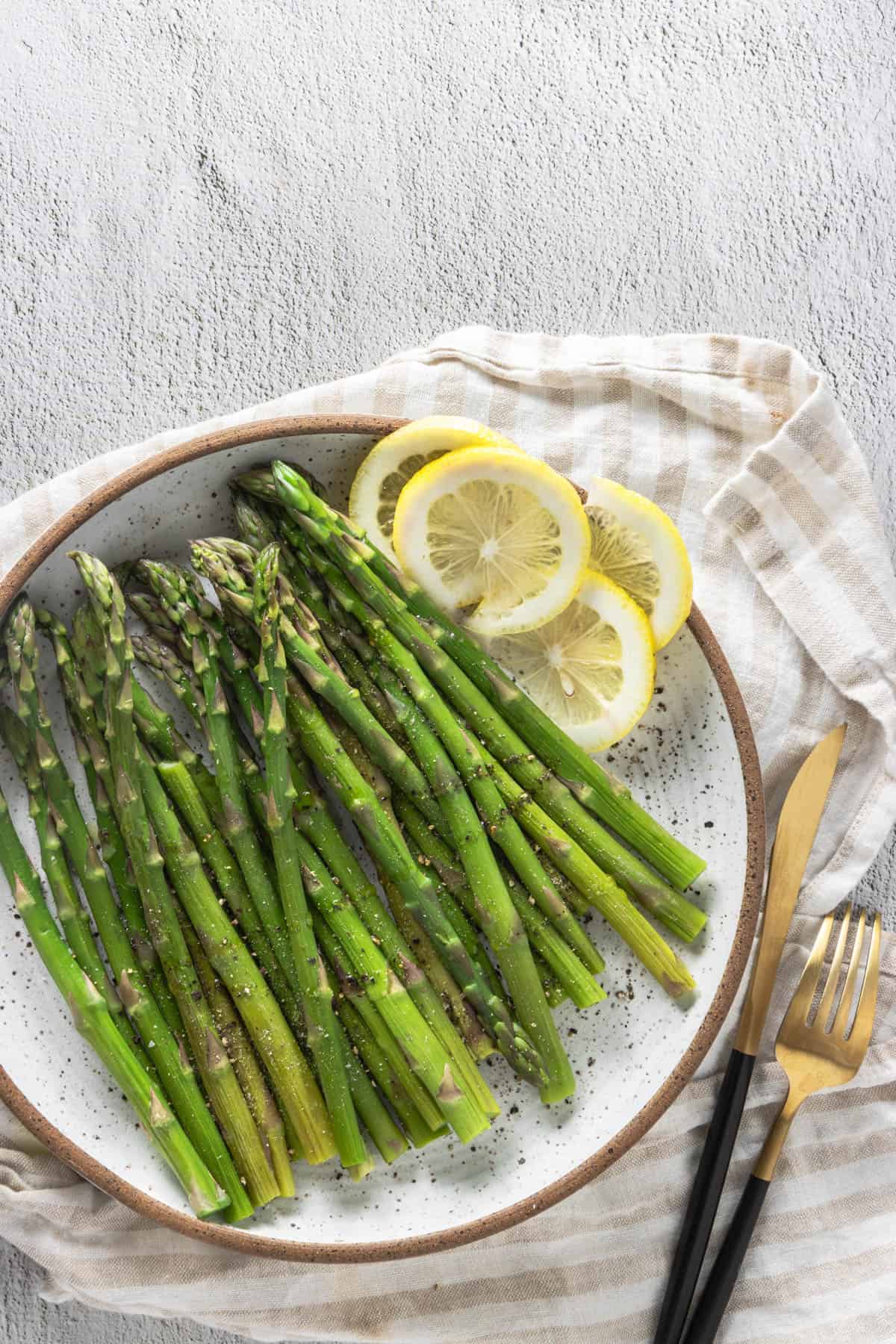
Organic Meter: 🚫
Though asparagus doesn't have an exterior shell or husk, it seems to repel pesticides quite well. Studies show minimal residue on asparagus, so you can skip the organic on this one.
- Asparagus and spring vegetable frittata. Frittata, strata, quiche - they're all somewhat the same, but I am partial to the Italian favorite. The original recipe for this was inspired by a beloved neighborhood restaurant (Meridionale in Trastevere).
- Grilled asparagus in foil. May is prime BBQ season, so get ready with this easy foil packet recipe for all your side needs! Or you can make this griddled asparagus, which is equally easy and delicious!
- Easy asparagus casserole, with tender asparagus, delicious cheddar and topped with crunchy breadcrumbs for an easy one-dish meal you'll love.
- Pasta with asparagus and basil cream sauce. Basil is just starting to get into season, but my indoor seedlings went a bit crazy this year, so here's some delicious pasta that looks and tastes like springtime!
Fava Beans
Fava beans (or broad beans) are a new addition to my pantry this year. Fresh fava beans are an absolute delight - plump, juicy and delicious! Peeling them does take a while, but they're totally worth the effort.
Organic Meter: 🚫 / 🟢
I almost always buy organic green beans (incl. fava beans). Studies have found that acephate and methamidophos on green beans were a high-risk residue. However, broad beans have lower residue than some other varieties, so you could buy traditional varieties (though I still recommend organic!)
- Fresh fava bean salad. This recipe includes a guide to prepare and cook fava beans into a delicious fresh springtime salad with asparagus, peas and parmesan - you won't regret it.
- Spiced fava bean soup with rice and tomatoes. Every season is soup season in my household and this soup makes for a killer weekday meal.
- Arugula and fava bean crostini. Honestly, fava beans + arugula make for a killer combination on toast (say, on this avo toast) or by itself.
Basil
Sweet, sweet basil is my favorite herb (I really should have been born Italian). When basil starts blooming, you know summer is almost here. There are so many ways to eat basil (check some suggestions below).
If you're interested in harvesting a bumper crop and preserving them, check out my post on how to dry basil or freeze basil. If you're looking for a quick handy basil substitute guide, I got you on that too.
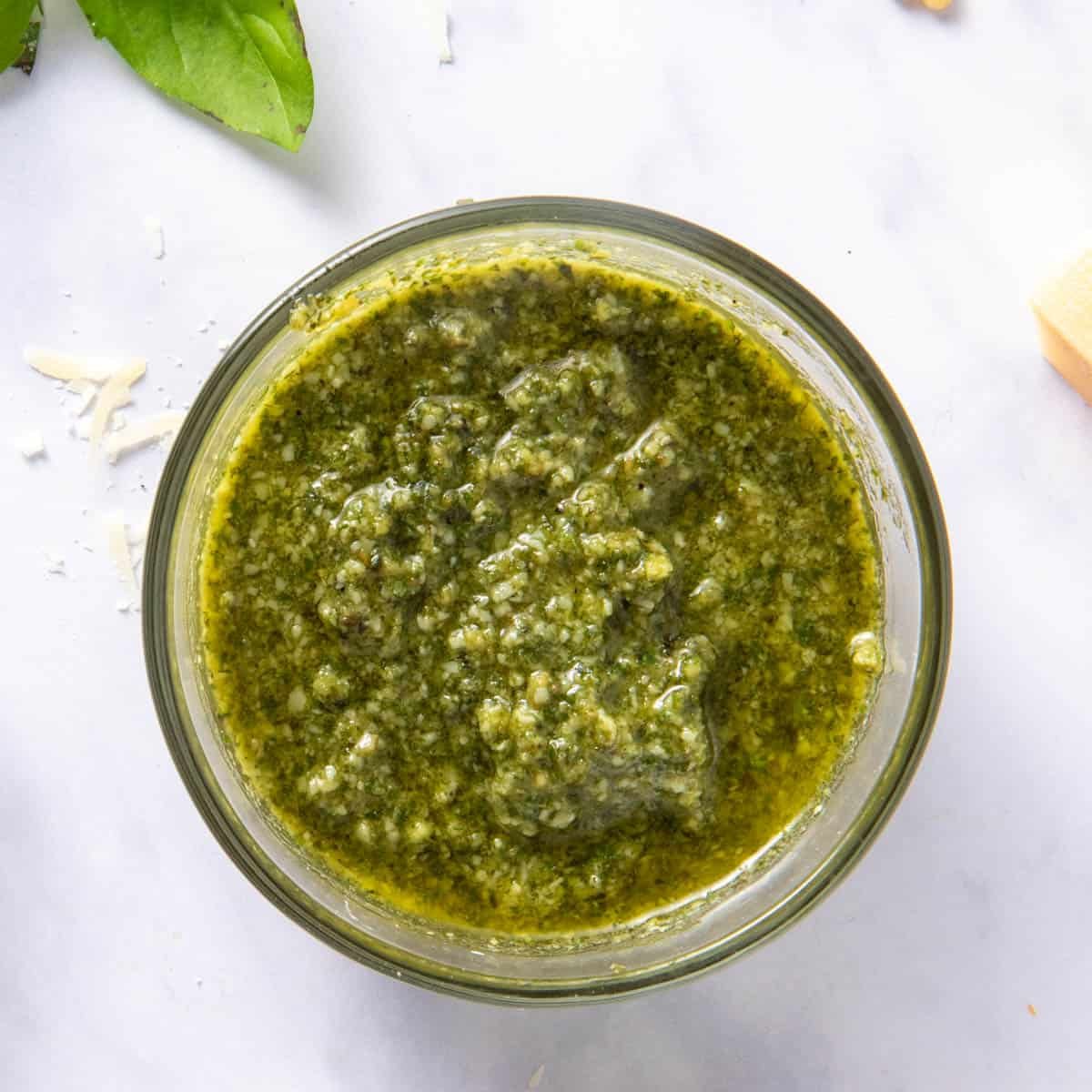
Organic Meter: 🟢
Similar to leafy greens, I highly recommend that you buy organic basil (or better yet, grow some yourself!) It's a super easy plant to grow (as long as you get enough sunlight).
- Basil pesto. We can't talk about basil without talking about basil pesto (whether that's the traditional pesto all Genovese or something like this broccoli + basil pesto).
- Basil cream sauce. If you want to go off the beaten path with a basil sauce or dip, try the cream sauce (or basil mayonnaise / basil aioli)
- Mango-avocado salad with basil. Finely chopped basil makes this a herby hit. You can also use that in my spinach tortellini salad. Oh, and check out this post to learn how to chiffonade basil. Clearly, can you tell I love basil?
Other Herbs
So, May is the time when other herbs - chives, oregano, mint, nettles, garlic scapes and fiddleheads are all in season. I know it's unfair to give basil it's own section up there and then lump all of this into one, but hey, I told you I loved basil. But here are some great ways to cook up these other herbs.
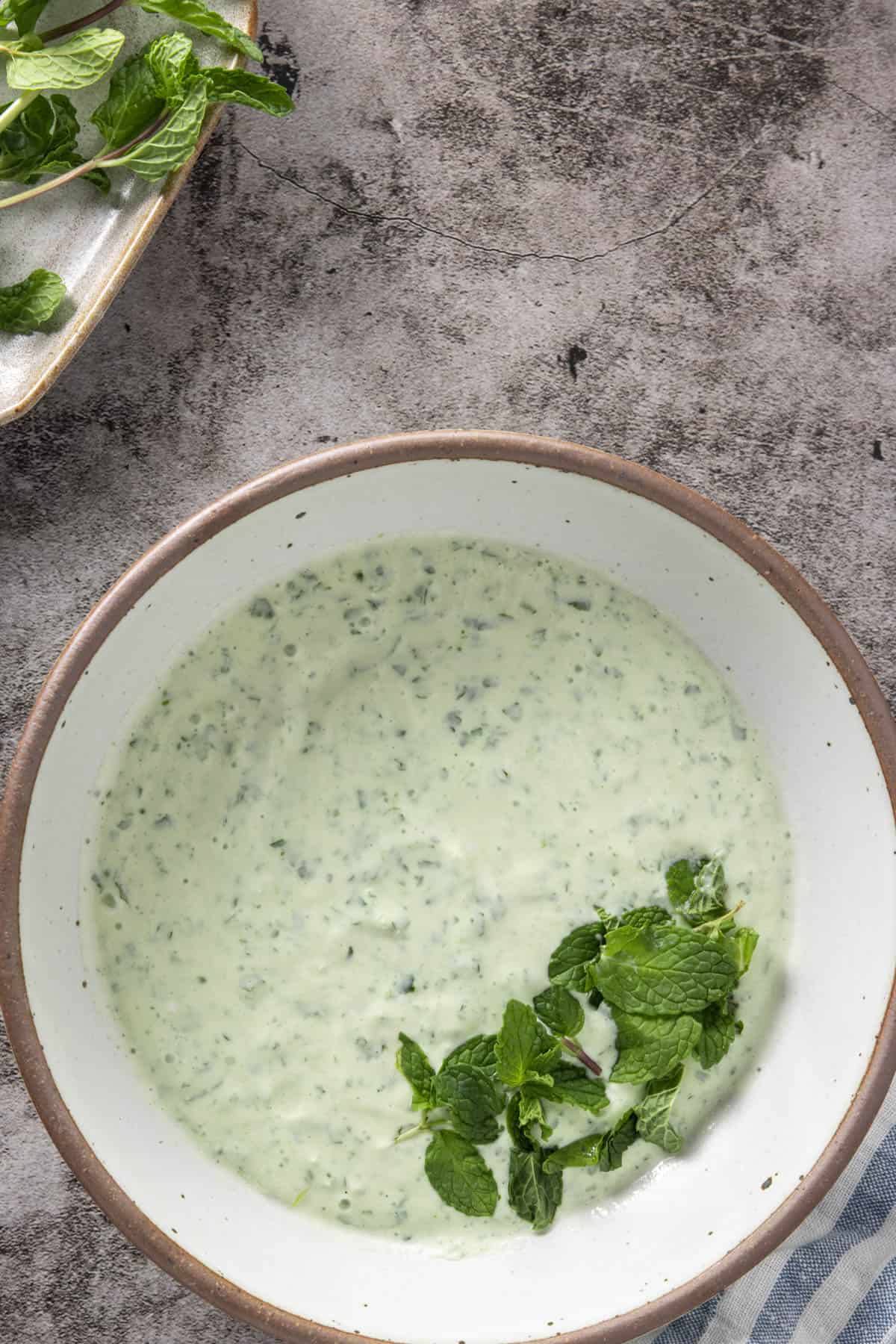
Organic Meter: 🟢
Similar to leafy greens and basil, I highly recommend that you buy organic herbs. Again, you can also easily grow many of these on a simple windowsill planter if you choose to do that!
- Mint raita. I love adding other fresh herbs to my raita (aka Indian yogurt sauce) because it really elevates the flavors to a whole new level.
- Garlic scape pesto. Hard to beat a good pesto when it comes to using up fresh herbs! Garlic scapes are mild and yet, super flavorful. Great pesto!
- Stir-fried fiddlehead ferns. Okay, I need to double check if these are "herbs" but fiddleheads are quite delightful when in season. Simple stir fry with garlic, butter and shallots? Noms.
Mushrooms
I absolutely love mushrooms! I literally throw them into all my pasta recipes even when they have no business there, and sometimes like roasting them and just snacking on them on the sly. Oyster mushrooms are in season this time around, so make sure to grab them while you can!
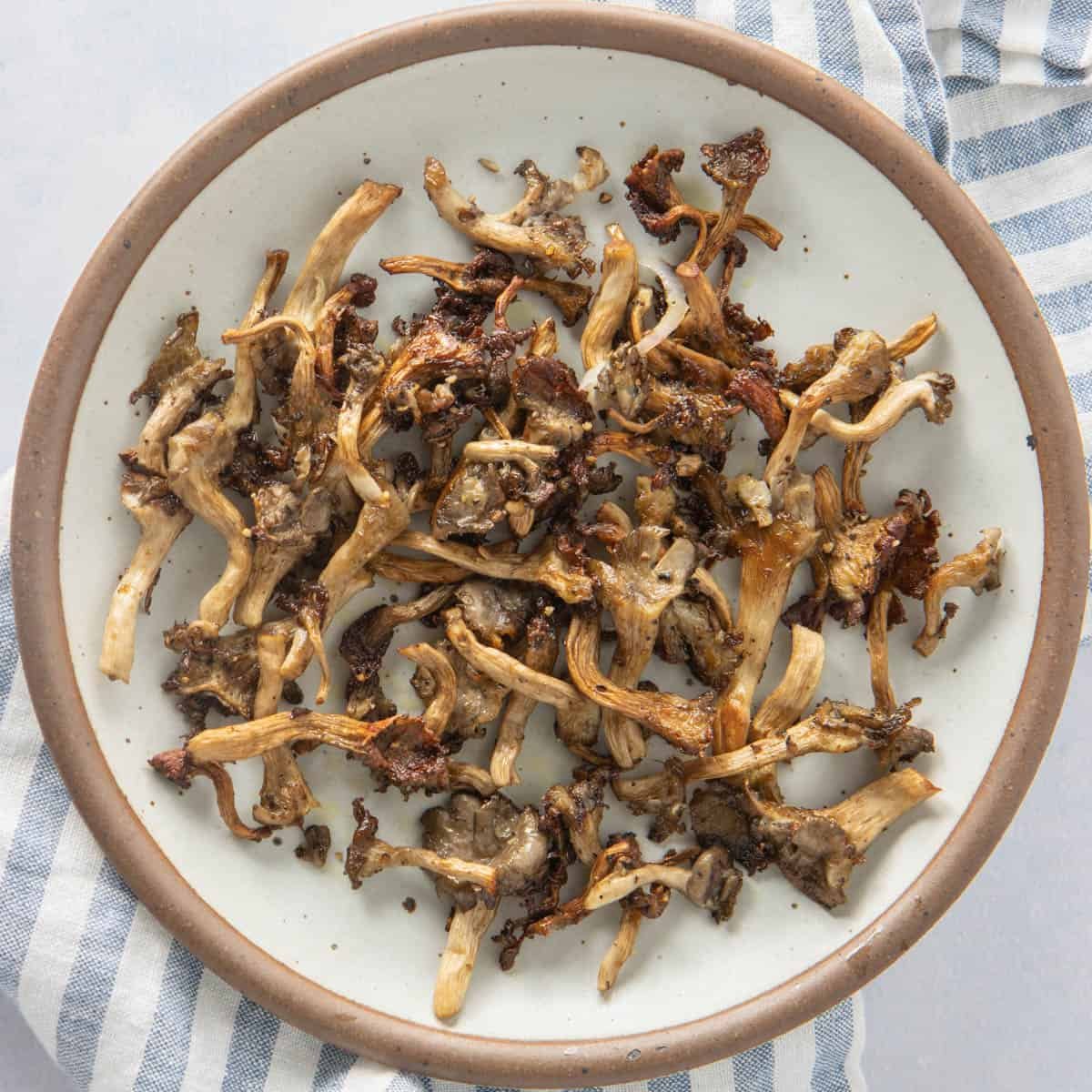
Organic Meter: 🚫
You can skip the organic for this one too. Mushrooms are typically grown under controlled indoor conditions (or foraged for in the wild) and in both those cases, you really don't have to worry much about chemical residues!
- Roasted oyster mushrooms: This is a simple recipe that can help you get crispy, roasted oyster mushrooms in less than 30 minutes. Cook them up without seasoning (salt draws out water) and enjoy a crispy topper.
- Creamy leek and mushroom pasta: This pasta takes 40 minutes and it's great for a quick weeknight dinner! Sauté leeks and mushrooms, remove them before cooking the pasta, or you can cook the pasta separately!
- Spring pasta with peas and oyster mushrooms: This is literally spring on a plate - green, luscious pea shoot pesto topped with those delectable oyster mushrooms. What's not to love?!
Peas & Shoots
I just planted a row of shelling peas in my backyard, and can't wait for them to be harvested! Sweet, delicious peas are a very underrated vegetable. There are three types of peas you can find this time around - shelling peas, snap peas, and snow peas. They're a great complement to more hearty vegetables like potatoes and carrots (like in my air-fryer samosa or kitchari)
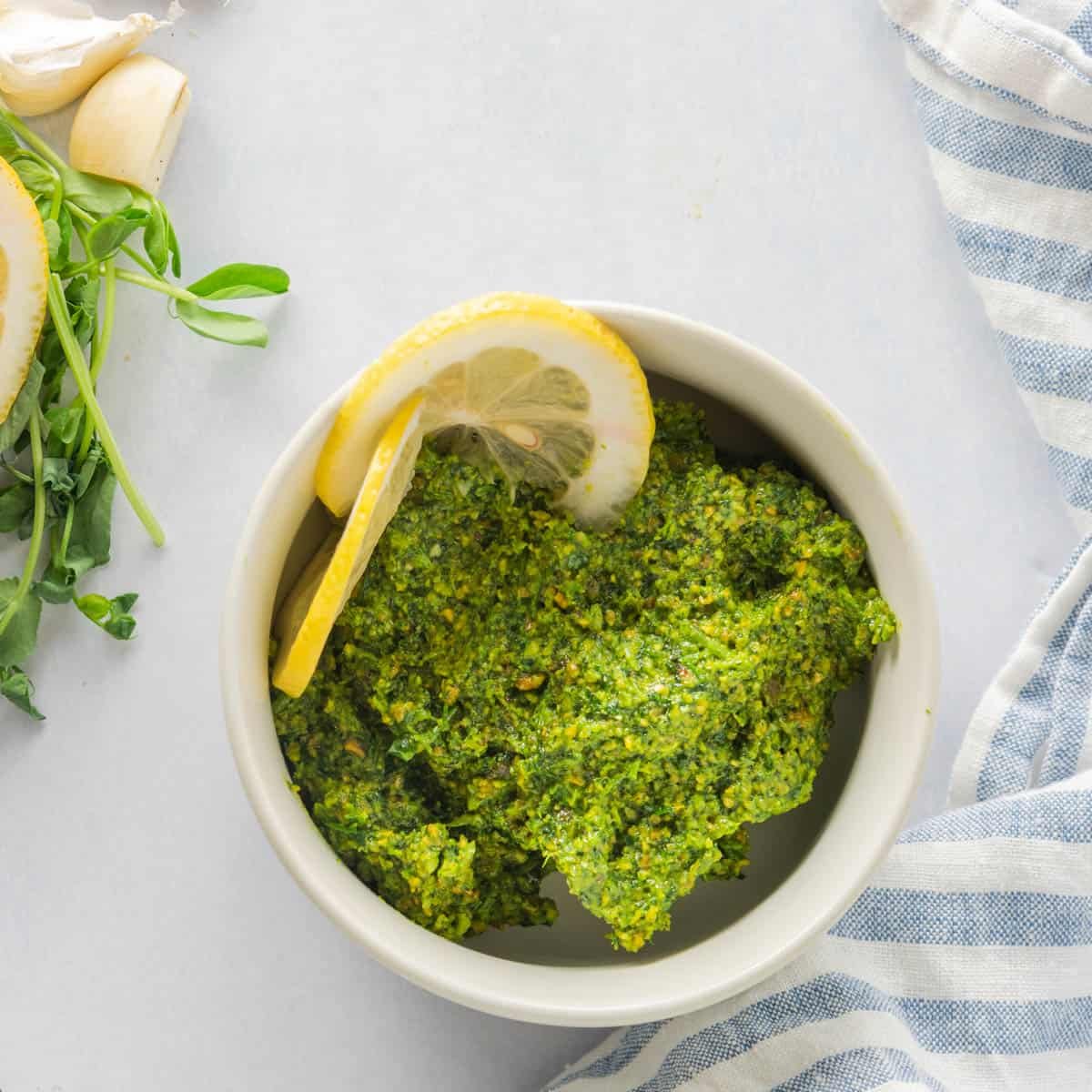
Organic Meter: 🟢
Peas are a really interesting vegetable because you can go totally conventional if you're buying frozen peas, so for half the year you're fine. However, for fresh snap peas - high pesticide residue means it's better to go organic.
- Pea shoot pesto: If you haven't made pesto with pea shoots, you're missing out. Oh, you can also make pesto with actual spring peas too!
- Lemony hummus and snap pea crostini: Here's a toast you can get behind. Hummus, citrus, snap peas? Delicious toast heaven.
- Spring salad with peas, ramps, and asparagus: Yet another version of spring on a plate - this salad is vibrant and green and mouthwatering!
Radish
Radishes are little potatoes when you roast them. I tend to use three types of radishes often - the traditional red kind, yellow Korean radish, and daikon. The former has a more peppery flavor, while the latter two are sweeter and lend themselves really well to Asian flavors!
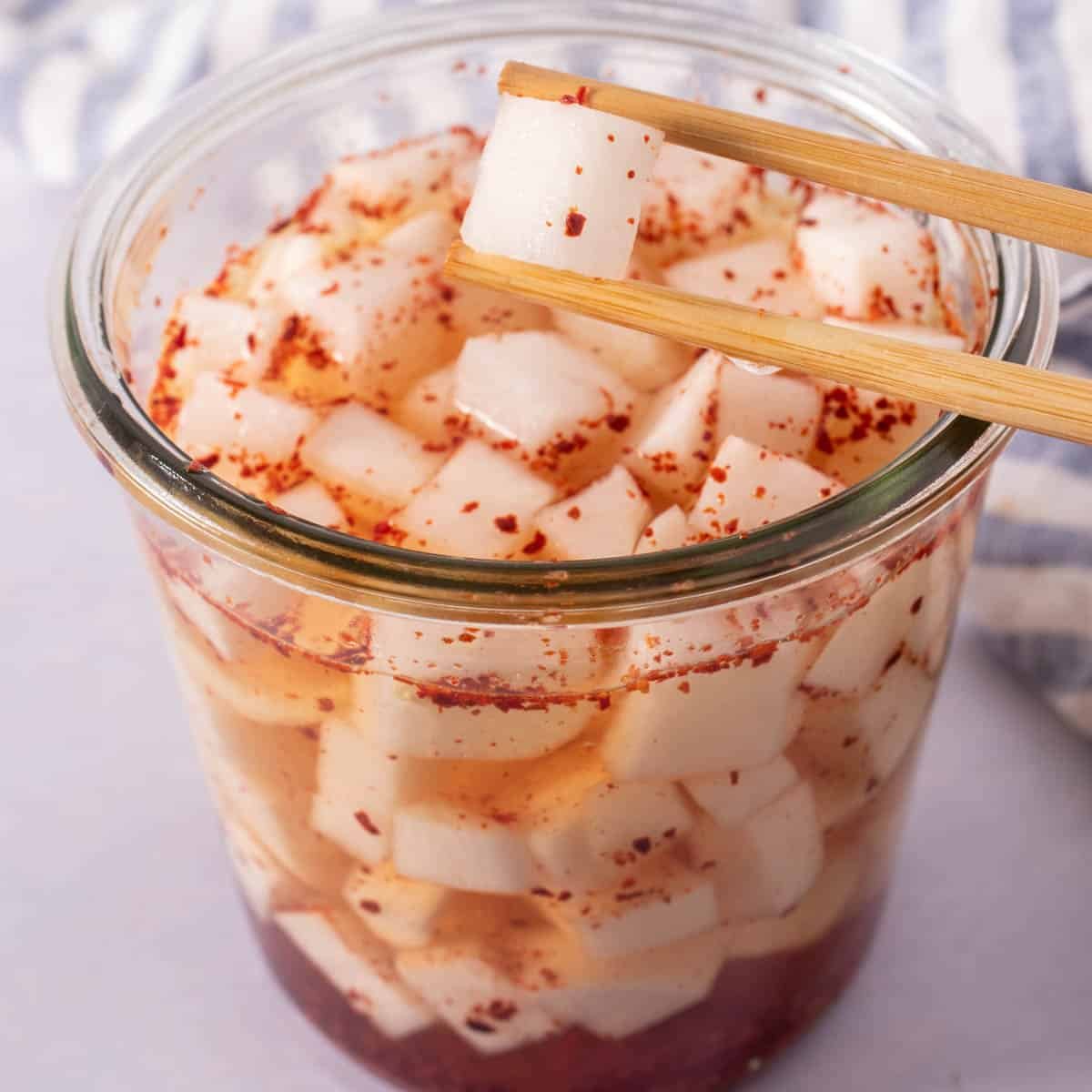
Organic Meter: 🚫
Radishes, at least the red kind, are used as a natural pesticide because of how peppery they are! This is driven by compounds called isothiocyanates, which repel pests. Daikon radishes are a bit more neutral, but you can typically go inorganic.
- Pickled Korean radishes: Spring time means it's pickle time in our household. This is a simple quick pickle recipe that's a great complement to most Asian dishes (like with this quick fried rice or kimchi pancake)
- Roasted radish: Slice off edges, cut into halves, and roast them after drizzling with olive oil, salt, and pepper at 425F for about 30 minutes. Phenomenal in tacos!
- Daikon salad. I love making this simple daikon and carrot salad with a refreshing sweet and sour dressing. Comes together in 10 minutes too!
Rhubarb
I can't really talk about springtime in Seattle without talking about rhubarbs. I'd never had rhubarb until I moved to the US so this is a new addition to our shopping list. But here's to hoping they become more of a favorite over the years to come!
Organic Meter: 🟢
Unfortunately, I wasn't able to find testing data (from the EPA) on rhubarb, so pesticide levels are unclear. I recommend going organic in these cases just to be sure!
- Rhubarb strawberry margaritas. Strawberries are not quite in season (they will be come June!) but these margaritas sure look appetizing!
- Rhubarb and chia overnight oatmeal. I find overnight oats to be a great way to use up fresh (or frozen!) berries in general.
- Rhubarb crisp. Can't really talk about rhubarb without talking about a crisp (or so I've learned!) So here's a simple recipe from the NYT.
Spinach & Spring Greens
I know, I had arugula up there separately, and I'm now talking about spinach alongside other spring greens. Trying to squeeze as many greens as possible (I mean, it is the peak of spring!)
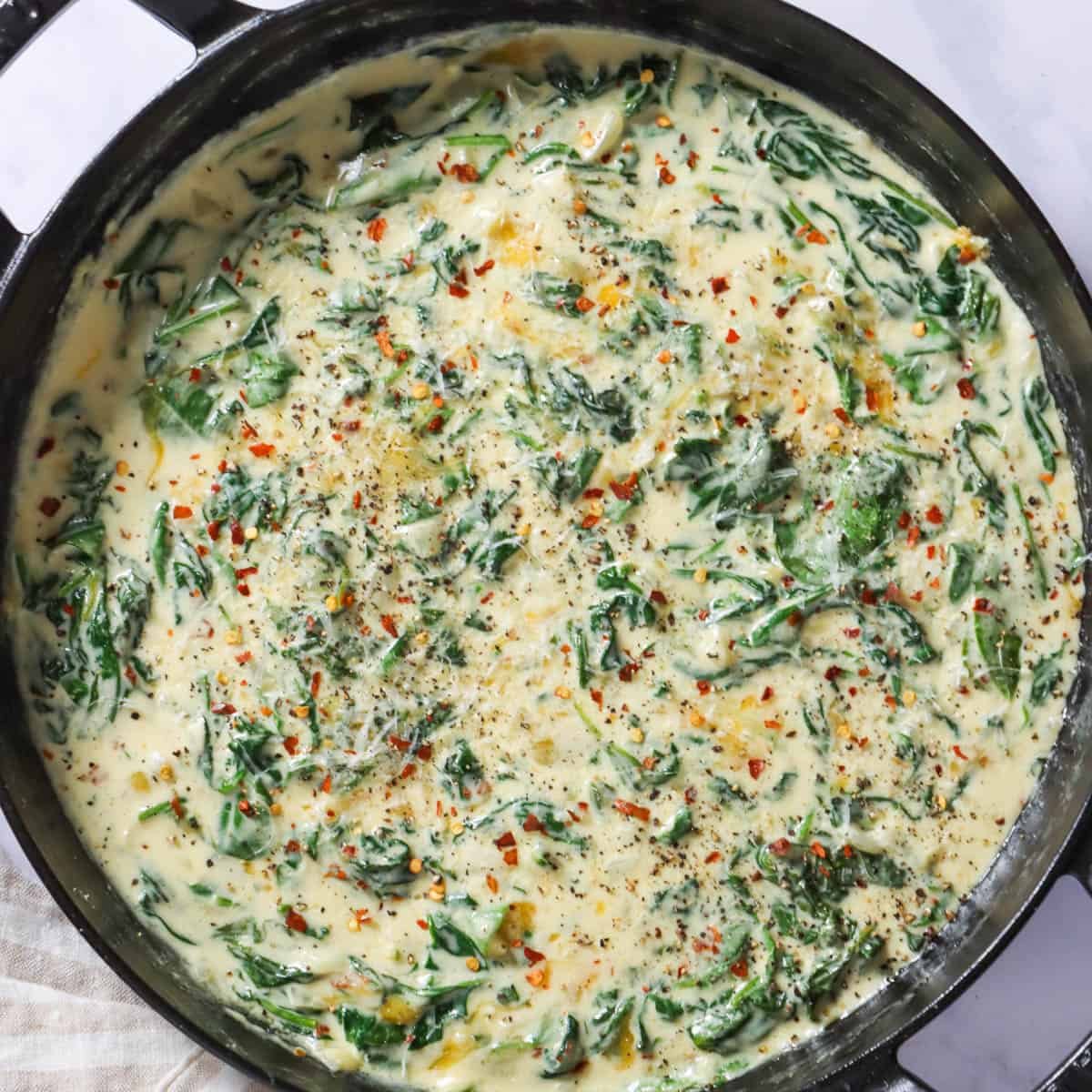
Organic Meter: 🟢
This depends to some degree on the specific green, but I'm going out on a limb to say, you should probably just get organic greens. Spinach is often one of the worst offenders when it comes to pesticide residues, as is lettuce.
- Creamed Spinach, aka Spinach Maria. This is a salty and spicy spinach dip that gets a nice kick from red pepper flakes. Inspired by a Tennessee restaurant, this has become a favorite in our household!
- Vegan Efo Riro. This is a recipe from my Nigerian sister-in-law (but of course, veganized). This is a delicious Nigerian spinach stew with a tangy red pepper base (the same as the base for Jollof rice!).
- Sautéed spinach. Honestly, throw some garlic, pepper flakes and have the easiest side ever (but delicious of course!)
Turnips
Turnips are pretty cute. My blog's mascot is a cute little turnip I called "Mr. Turnip Turnitup" but I digress. Turnips were a vegetable my mom used to make often as a kid and I genuinely despised. But over time, they've really grown on me. If you're looking for Indian turnip recipes, look for "shalgam" (the Hindi word for turnips).
Organic Meter: 🟢
Pesticide data on turnips are a bit complicated to interpret. So, you might be okay getting traditional turnips (especially if you don't eat a ton of them). However, I recommend going organic if you can afford it / it's possible to find organic turnips.
- Parmesan crusted turnips. These parmesan crusted crushed turnips are "smashed" turnips to some degree, but a great low-carb alternative to potatoes! Turnips + parmesan are also a match made in heaven.
- Instant pot shalgam ki sabzi (i.e., turnip curry). Like I said, turnips are a fan favorite in Indian households (apparently) - check out this tangy curry for a great dump recipe to cook turnips!
- Creamy turnip soup. Similar to potatoes, turnips lend themselves really well to a creamy soup creation. And super easy to pull off!
Note: Sunchokes, watercress, sprouts, garlic scapes, black eyed peas and many other produce are also in season from May! I picked the most versatile ones for the list!
(Almost) Always in Season
I realize there are a few recipes that are almost always in season, thanks to growing conditions, hardy plant structures (e.., potatoes), or complementary growing seasons (e.g., like avocado)
So, I figured instead of repeating them in each produce guide like I usually do, I'm just going to lob them into a separate section here so you know you can buy these pretty much year-round. To find recipes for these, just use the search button on the top right of the blog!
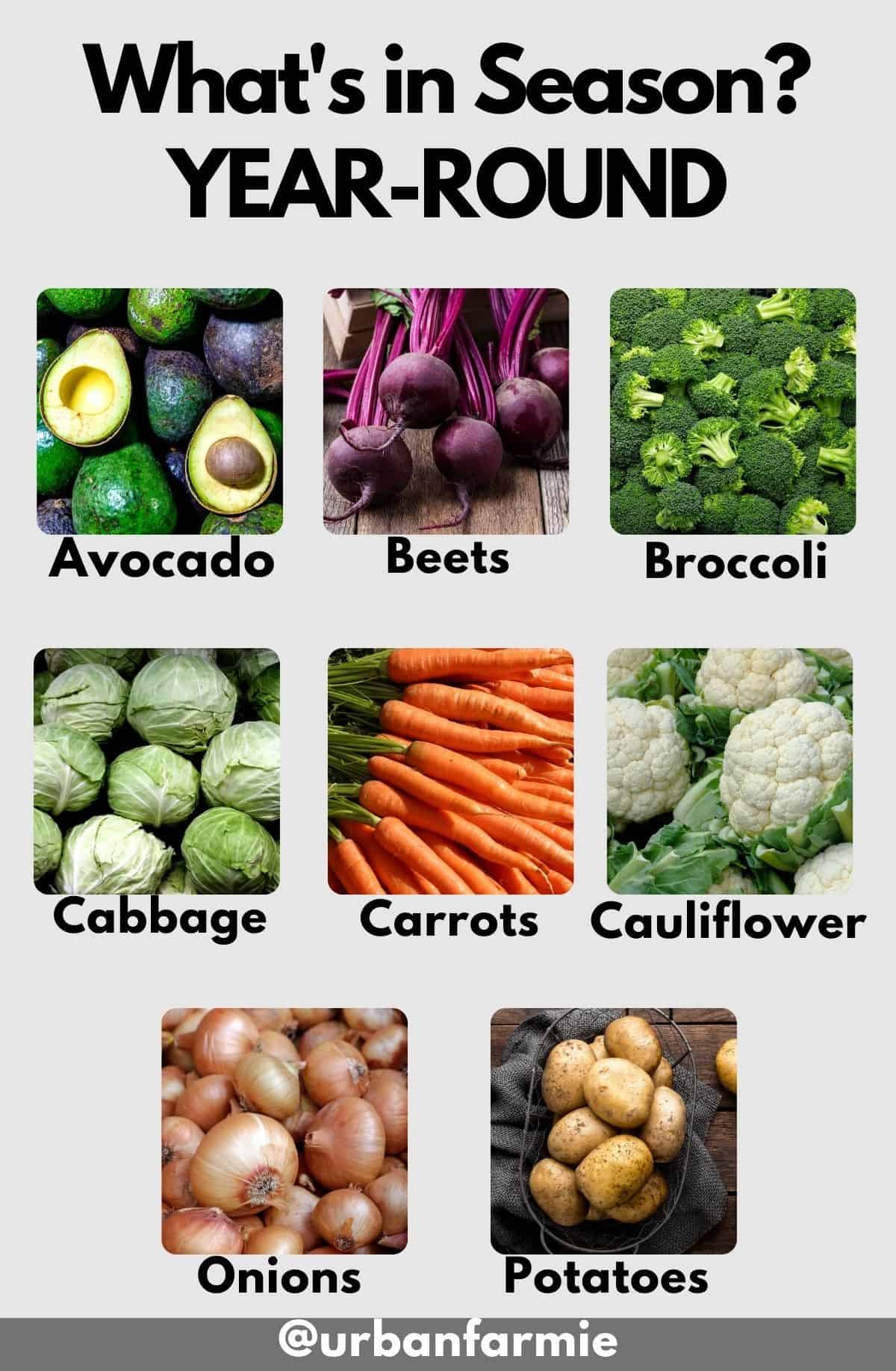
Avocado
Avocados have complementary growing seasons between the US and Mexico, giving us a year-round harvest. Try to buy individual avocados at varying stages of ripeness so you have some for the whole week!
Organic Meter: 🚫
Avocado often makes it to EWG's "Clean" list and for good reason - studies often show very limited presence of pesticides on avocados, so you can skip the organic here as well and just reach for the traditional ones!
Beets
Beets are a cool season crop, so they're great to grow in both Spring and Fall. Through succession planting and some crop cover, you can actually also grow them through the winter and summer! As a result, you'll find beets almost year round.
Organic Meter: 🚫
Though root vegetables that have a thin skin tend to absorb pesticides, beets that are grown for eating (compared to sugar beets, grown for producing sugar) only get a mild spraying of herbicide during the growing season. Hence, it is acceptable to buy inorganic beets.
Broccoli
This member of the brassica family is generally cultivated from Fall to mid-summer, so it's actually a great crop for year-round consumption.
Organic Meter: 🚫
Brussels Sprouts, cauliflower, cabbage and broccoli all have hardy outer protection that ward off most pests. Hence, it is acceptable to buy inorganic broccoli. Look for ones without brown spots!
Cabbage
Cabbage is yet another cool season crop that actually grows in almost all the states in the US. Though it's primarily cultivated in Fall / Spring, it is available year-round in most places in the US.
Organic Meter: 🚫
Brussels Sprouts, cauliflower, cabbage and broccoli all have hardy outer protection that ward off most pests. The most common pest varieties (e.g. diamondback moths, cabbage loopers and maggots) are managed biologically. Therefore, it is okay to buy inorganic, but remove outer leaves of the cabbage!
Carrots
Okay, this is cheating a bit since carrots technically have just two seasons. However, it's not cold stored with chemicals (e.g., apple), and California, the largest producer, has a year-round growing season.
This fan favorite vegetable is also available year-round like some of the other root vegetables on this list. There are early, mid and long season potatoes, and as a result, you end up getting a harvest and storage pretty much year-round.
Organic Meter: 🟢
Carrots and peanuts are actually known to absorb chemicals and heavy metals from the soil (they are root crops after all!) So I tend to buy organic carrots whenever possible.
Cauliflower
California is one of the main producers of cauliflower in the US, and thanks to favorable growing conditions, you get cauliflower mostly year-round (maybe with the exception of July-August, when it's planted).
Organic Meter: 🚫
Starting to sound like a broken record here, but cauliflower, like other cruciferous vegetables has hardy outer protection to ward off most pests. The most common pest varieties (e.g. diamondback moths, cabbage loopers and maggots) are often managed biologically. Therefore, it is okay to buy inorganic!
Onions
Yellow and red storage onions are typically available year round. White onions are planted in the Fall and eaten in spring. Red and yellow onions are harvested at the end of the summer.
Organic Meter: 🚫
Like leeks, onions don't need to be organic (as long as you thoroughly wash them before using). They emit a strong sulphuric smell which naturally keeps pests away, reducing the need for chemicals, so I'd say skip the organic for this one!
Potatoes
This fan favorite vegetable is also available year-round like some of the other root vegetables on this list. There are early, mid and long season potatoes, and as a result, you end up getting a harvest and storage pretty much year-round.
Organic Meter: 🟢
Surprisingly, potatoes (especially Russets) are notorious for retaining chemicals (they're often grown on heavily fumigated soil). Try to buy only organic potatoes as much as possible.
Check out the April produce guide and the June produce guide to get a sense of how these vegetables change through the season. For other seasonal produce guides, check out my collection of seasonal produce guides!
If you try any of my recipes, let me know! Leave a comment, rate it, and tag #urbanfarmie on Instagram or @urbanfarmie on Pinterest!










Comments
No Comments